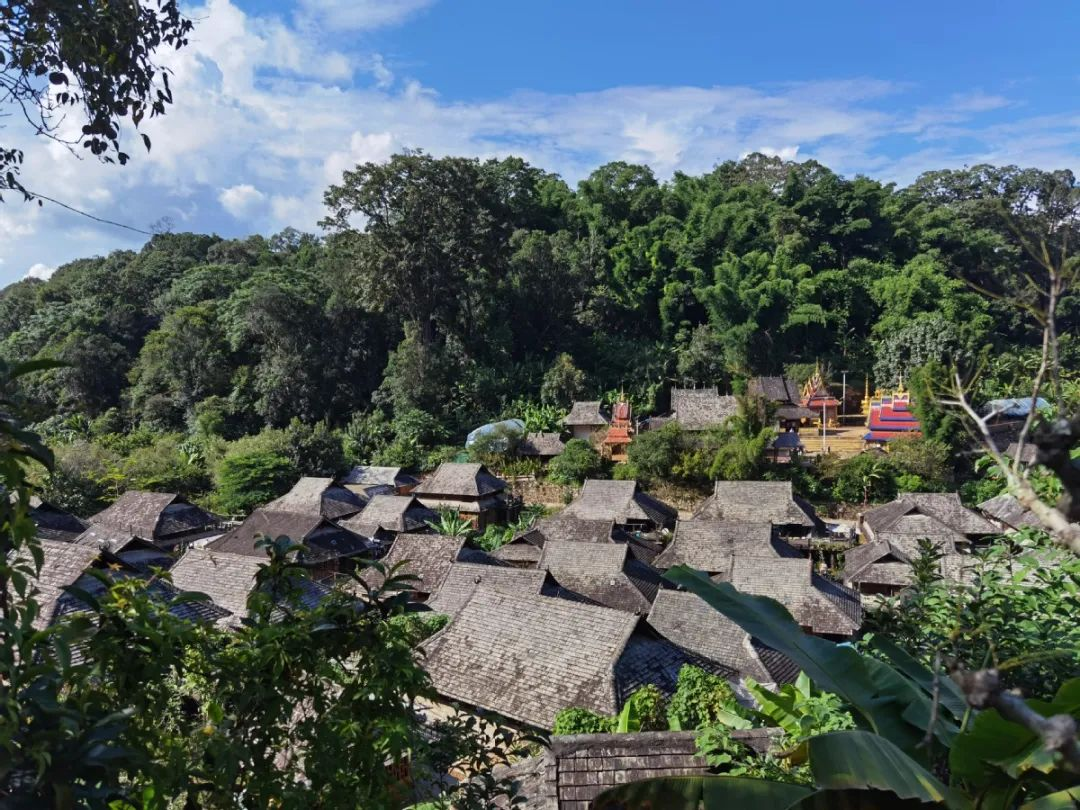
The Cultural Landscape of Old Tea Forests of the Jingmai Mountain in Pu’er gained World Heritage Site status on the 45th Session of the World Heritage Committee of UNESCO in Riyadh, Saudi Arabia on Sunday, becoming China’s 57th entry on that list. It is also the first World Heritage Site with the theme of tea.
The heritage site in Lancang Lahu autonomous county in Pu’er, Yunnan province contains 5 large-scale (大规模的), well-preserved old tea forests — which are 1,250 to 1,500 meters above the sea level, 9 traditional villages in these old forests, and mainly inhabited by Blang and Dai ethnic groups, as well as 3 protective separation forests in between. The landscape was jointly created by ancestors of Blang people who came and lived in Jingmai Mountain in the 10th century AD and discovered wild tea trees, as well as by the ancestors of Dai people.
On the basis of longstanding practices, local people developed an under-story growing technique. That is to create ideal light conditions for the growing of tea trees through limited under-story cultivation (耕种) while preventing insects through the well-preserved forest ecosystem, so as to produce all wool and a yard wide organic tea leaves without the application of pesticides and chemical fertilizers.
On Jingmai Mountain, indigenous communities also maintain ancient governance systems to protect the site, including traditional festivals and ceremonies related to Tea Ancestor, a belief that spirits live in forest as well as among local animals and plants. Tea leaves contribute to over 90 percent of the income for those communities. Other than that, local governments of Yunnan province and Pu’er city released 3 laws and 7 regulations focusing on the protection of the cultural landscape on Jingmai Mountain.
The core zone of the World Heritage Site covers about 72 square kilometers on Jingmai Mountain. The cultural landscape of old tea forests was first included in China’s tentative list seeking for World Heritage status in 2012.
1.Where is the text probably taken from?
A A culture magazine.
B An exam paper.
C A course plan.
D An academic article.
解析:选A。A 推理判断题。根据文章第一段内容可知,中国“普洱景迈山古茶林文化景观”被列入《世界遗产名录》,属于“文化”版块,我们可以在文化杂志读到本文。故选A。
2.What does the underlined part “all wool and a yard wide” mean?
A High-quality.
B Hard-working.
C Low-key.
D Low-cost.
解析:选A。A词义猜测题。根据划线部分前面的描述可知,在长期实践的基础上,当地人为茶树的生长创造理想的光照条件,同时通过保存完好的森林生态系统防止昆虫,从而在不使用杀虫剂和化肥的情况下生产出“优质的”有机茶叶。故选A。
3.What is the fourth paragraph mainly about?
A How the mountain got its name.
B Why the site is important to the locals.
C How the site is protected.
D What people think of the site.
解析:选C。C段落大意题。该段主要讲了人们是如何保护该遗址的。故选C。
4.Which is the most suitable title for the text?
A The development of Old Tea Forests of Jingmai Mountain.
B Old tea forests in Pu’er win World Heritage Site title.
C Old tea forests on Jingmai Mountain became popular online.
D History of the Jingmai Mountain in Pu’er.
解析:选B。B主旨大意题。本文主要讲述了“普洱景迈山古茶林文化景观”成功列入《世界遗产名录》的相关情况,系全球首个茶主题世界文化遗产。故选B。